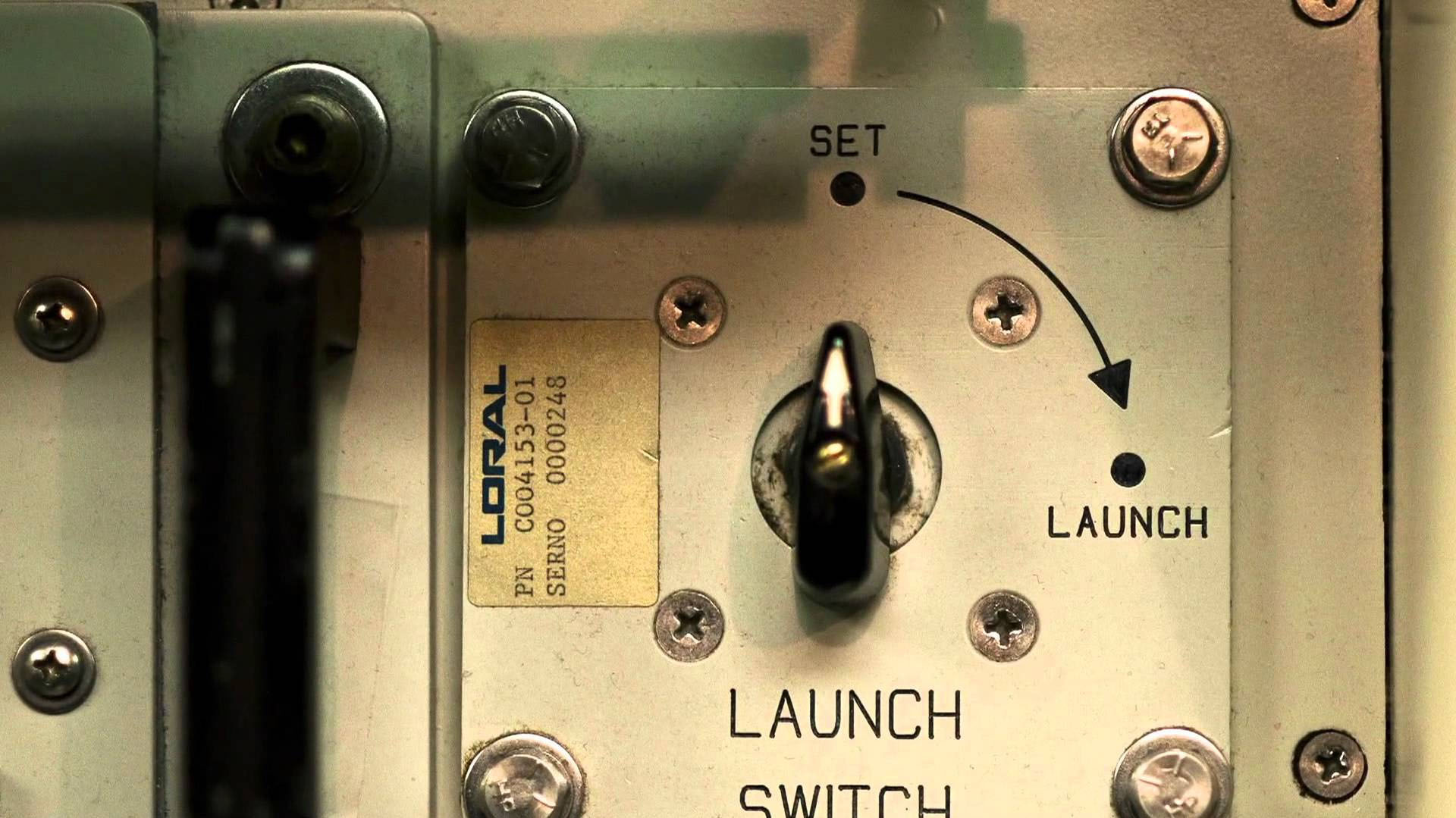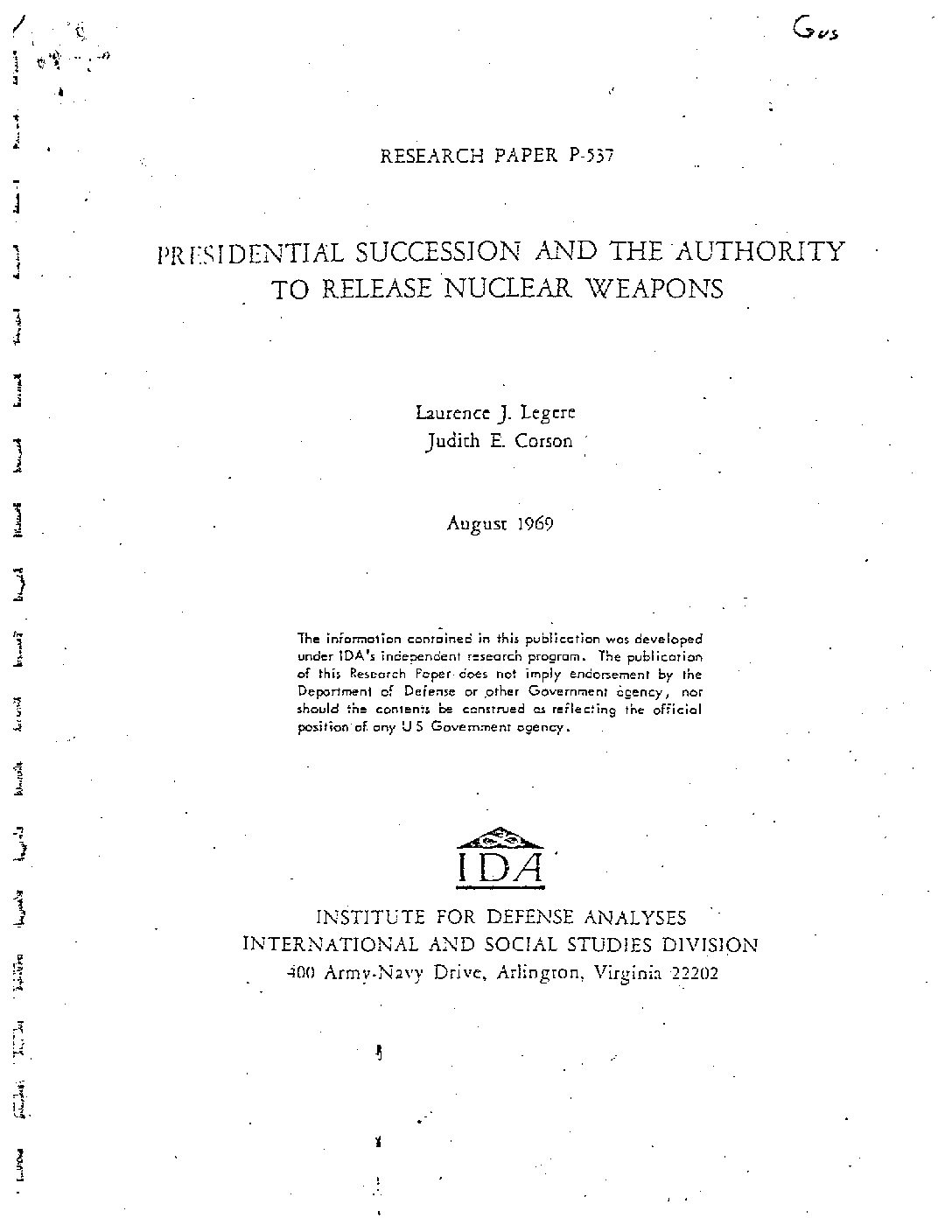Date
August 1969
Document
- View PDF (2 MB)
Description
The Institute for Defense Analyses’ (IDA) report on Presidential Succession and the Authority to Release Nuclear weapons discusses the historical context and evolution of presidential succession, and how the emergence of nuclear weapons has changed these policies. The analysis focuses mostly on the Presidential Succession Act of 1947 and proposals thereafter. To date, succession falls in the order of: Vice President, Speaker of the House, President Pro Tempore of the Senate, followed by the Cabinet members in the order in which their positions were created.
The Presidential Succession Act of 1947 added the Speaker and President Pro Tempore to the line of succession ahead of the Cabinet members in an effort to establish elected officials as successors before appointed officials would succeed to the presidency. The powers to release nuclear weapons lies solely in the presidency, and does not fall to the military chain of command. The use of nuclear weapons is thus “…the ultimate expression of the popular will.”
As a conclusion, the report suggests a variety of ways to ensure that, in the event of a devastating nuclear attack on Washington D.C., a presidential successor or person with the authority to launch a counterattack would exist. In this worst case scenario, whereby the President and their seventeen successors are killed or incapacitated, it is unknown who would have release authority for any retaliatory response.
The President, under the 25th Amendment has the option to pre-delegate the responsibilities of launching a nuclear attack to a ranking federal official. This has been seen on a tactical scale in the case of North American Air Defense Command, where General Earle E. Partridge was given the delegated authority to use defensive nuclear weapons should they be necessary to combat a Soviet nuclear attack. But this does not classify or set precedent for a strategic response independent of the approval of the presidency.
Another solution would include keeping a member of the line of succession away from Washington at a secure location at all times to ensure there will be one official with release authority alive and available in the event of a devastating attack on the capital. Congress might also consider expanding the line of succession to deputy secretaries, state governors, the Joint Chiefs of Staff, or other federal and state officials.
Lacking a pre-delegation of authority, there is ambiguity surrounding the U.S. nuclear response to this worst case scenario.
Citation
Laurence J. Legere, Judith E. Corson. 1969. Presidential Succession and the Authority to Release Nuclear Weapons.
Topics
Document entry started by Michael Gajdosik on August 11, 2020. Entry last updated by Michael Gajdosik on August 11, 2020.

